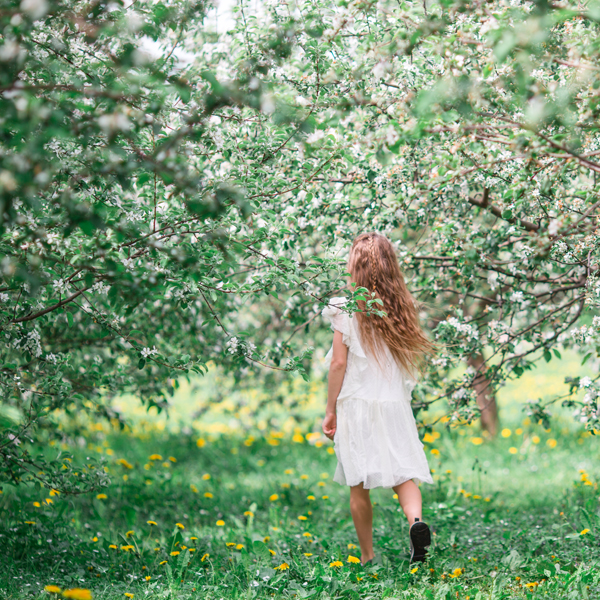The arrival of spring is welcomed by most people, with its blue skies and warm breezes gently blowing away the winter blues. For some however, these breezes bring unwelcome challenges in the form of seasonal allergies. The itching, puffy eyes, running nose and dry throat make for an uncomfortable start to the new season. Seasonal allergies affect many people and bring symptoms including:
- Runny nose
- Nasal congestion
- Sneezing
- Itchy eyes, nose or roof of mouth
- Cough
- Sinus pressure and facial pain
- Sleeplessness
- Fatigue
- Irritability
Seasonal allergies occur when your immune system overreacts to an environmental trigger, called an allergen. Common allergens include pollen and dust mites, which both increase at this time of year. Histamine is released by mast cells throughout the body, along with other inflammatory substances when you are exposed to these allergens. These symptoms are often treated with drugs to dampen down this response. Over time these drugs stop working, or they cause problems of their own.

Some measures you can take to control seasonal allergies are simple things like reducing dairy foods and using essential oil humidifiers. Vacuuming and washing your linen, curtains and rugs in hot water will also help reduce dust mites.
Vitamin C is an often overlooked way to reduce these symptoms without the nasty side effects of conventional drugs. Foods that contain high amounts of Vitamin C should be included in your diet every day. This will benefit your immune system, connective tissue, heart health, blood vessels and skin.
Foods high in Vitamin C are a tasty addition to meals and make handy snacks on their own. Including a wide variety of Vitamin C rich foods will also give you an array of other nutrients to support your health such as quercetin and bromelain. Some interesting ones to look for beside the usual oranges, lemons and limes include:
Kakadu Plum (Terminalia ferdinandiana)
Rich in Potassium, Vitamin E and lutein, Kakadu Plum contains the highest concentration of Vitamin C, with just one plum containing 530% of the recommended daily intake (RDI).
Acerola Cherries (Malpighia emarginata)
Just one-half cup (49 grams) of red acerola cherries delivers 822 mg of vitamin C, or 913% of the RDI.
Rose Hips (Rosaceae)
Rose Hips are a small, tangy fruit from the rose plant. Rose hips are often used in skin care products. Its combination of nutrients, along with Vitamin C, support collagen synthesis and reduce sun damage, wrinkles and discolouration.

Chili peppers (Capsicum annuum)
Interestingly, green chili peppers contain almost twice as much vitamin C than red ones with about 109mg per green chili compared to 72mg per red chili. Chili is also high in capsaicin which helps reduce pain and inflammation.
Guava (Psidium guajava)
Guava are high in lycopene, an antioxidant that helps with healthy blood pressure and cholesterol levels.
Blackcurrants (Ribes nigrum)
Anthocyanins give blackcurrants their rich, dark colour. A half cup of them provides about 101mg of vitamin C, helping to reduce the oxidative damage that contributes to chronic disease

Thyme (Thymus vulgaris)
Just sprinkling thyme over your meals adds valuable vitamin C because it has one of the highest concentrations of all the culinary herbs, gram for gram it has three times as much as oranges.
Parsley (Petroselinum crispum)
The vitamin C in parsley helps with absorption of its significant amount of plant-based, non-heme iron. These nutrients in combination can increase iron levels, hemoglobin and ferritin for vegetarians, even by adding just a small amount each day. Parsley is also very high in vitamin A.
Kale (Brassica oleracea var. sabellica)
Kale is a cruciferous vegetable that contains vitamin K, lutein and zeaxanthin. One cup of chopped raw kale contains 80mg of vitamin C. Lightly boiling, frying or steaming kale helps release its antioxidants.
Lychees (Litchi chinensis)
Lychees contain omega-3 and omega-6 fatty acids, which benefit your brain, heart and blood vessels. One cup of lychees provides 151% of the RDI of vitamin C.

Some other delicious sources include kiwi fruit, brussels sprouts, American persimmons, papayas, strawberries and of course all the citrus fruits we are familiar with. Luckily Springtime is the perfect time of year to begin adding these foods into your daily routine with fresh foods making a comeback after our warming comfort foods of winter.
Wonderfoods Tangy Vitamin C is an effective way to ensure that we have enough Vitamin C every single day. The ascorbic acid it contains is buffered with calcium phosphate, making it very gentle on the stomach. Combined with its great tangy taste it is suitable for each member of the family.
For over 20 years this blend has been a Springtime favourite, it contains hesperidin, a bioflavanoid found in citrus fruit, with zinc, to act together for effective immunity support all year round.


